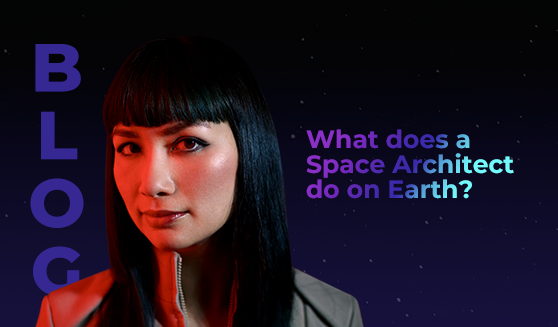
What does a Space Architect do on Earth?

Have you ever met a Space Architect? Let us introduce you to #LEAP23 keynote speaker Phnam Bagley (Space Architect at Nonfiction Design). Nonfiction is a creative studio that turns science fiction into reality, blending space architecture with Earth-based design and facilitating a future in which the world around us is…well, futuristic.
We asked Bagley how she got such an unusual job title, and what projects she’s working on right now. Here’s what she told us.
Could you share your career journey so far – and how you came to have the role of Space Architect?
“I was born and raised in Paris and studied industrial design there, specializing in luxury goods, product design and aerospace. After I was done there, I was invited to study space architecture at the University of Houston, along with mostly scientists and engineers. I believe it is still the only program that offers a Masters Degree in Space Architecture. Our class was very small – we were only 4 people at graduation.
“At the time of my studies, space architecture was still quite traditional, with modules, habitats and life support systems that were standard at the time. We were focused on explorative missions, and the commercial space industry was in its infancy and unknown to the general public.
“Philosophically, my work has always been focused on benefiting humans and the environment. I wanted to make space more human, and a place where nature could flourish. But in order to do that, I needed to learn everything about how to strategise, design and develop good products. I knew the space industry wasn’t going to provide that for me, so I left the industry for terrestrial design.
“I embarked on a 15-year career creating as many products as I could, from audio to computers, wearables to medical devices. The more I designed, the more I had the power to influence decisions to care more for our fellow humans and Mother Nature. When the pandemic happened at the end of 2019, my many ideas for a better future in space started emerging, and I decided to reintegrate the space industry.
“Thanks to my expertise in Earth-based design, I am now able to innovate effectively in space and extreme environment applications. I’m using my expertise in human-centered design in space to enrich the work I do on Earth. It was a strange path, but I feel so lucky to now be in the right place at the right time.”
What projects/products have you been working on at Nonfiction recently?
“So many cool projects are happening at different stages. We’re working on a brain implant system with Rice University that helps people suffering from clinical depression. We just launched a wearable with UC Berkeley scientists that helps people fall asleep and stay asleep all night. We’re working on a space kitchen that can be used in microgravity for deep space missions, like going to Mars. We’re working on menopause symptom relief, various wearables and experiences that support mental health. We’re also working on heart and cancer cell removal equipment for surgeons.
“I’m also teaching creativity and storytelling to police officers, senior members of the military and NASA scientists.”
What does it mean to you to work from a futurist perspective – and why do you think futuristic design is important to improve people’s life experience, both on and off Earth?
“When you don’t think about the future, you tend to answer the same questions with the same solutions. The ability to travel in space and time in your mind, uncover the possibilities and understand how we are evolving as societies is primordial to true innovation.
“Nonfiction has the right to refuse to work on projects that focus solely on profit. Instead, we think about the long-term impact of the work we do, on both humans and the Earth’s environment.”
If you could go back to the beginning of your career and tell yourself one thing you wish you’d known then, what would it be?
“Find your life purpose now. Everything will then fall into place naturally.”
What did you gain from LEAP 2023?
“I met cool, smart, passionate people from all over the world.
“It was my first time visiting KSA so I really enjoyed discovering the local culture, people, food and focus on the future. I look forward to developing relationships with KSA businesses and seeing what a California-based company like mine can do to accelerate innovation on Earth and in space.”
Thanks to Phnam Bagley at Nonfiction Design. Discover LEAP to learn more.
